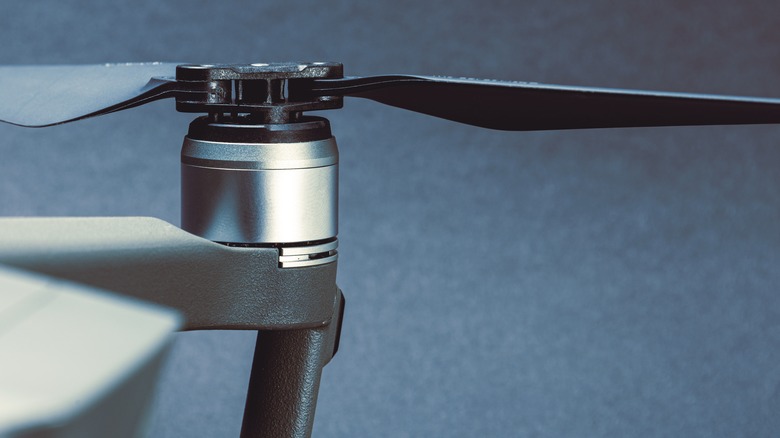Bug-Like Flying 3D Printers Are A Powerful New Tool
3D printing and additive manufacturing seem to be 21st-century goldmines, making waves in everything from jewelry and automotive manufacturing to construction in more recent years. Who would have thought that technology like 3D printing could be combined with two other emerging technologies — drones and AI — to make something truly remarkable?
A team of researchers from The University of Bath, led by Imperial College London, published a paper in the journal "Nature" that details a very tantalizing new construction tool: autonomous drones that work like insects to repair and potentially even build entire structures. The researchers dubbed the manufacturing method aerial additive manufacturing, or Aerial-AM for short.
The drones work on the same principle as extrusion 3D printers, which means they feature a print head that sits vertically over the workspace to place a stream of quick-setting material in layers on a surface. As the extrusion takes place, the print head moves to create the desired shape. Layers are added as needed to form a final product. We've seen large machines that deposit concrete to print small habitats; in the case of this new innovation, the researchers developed their own test materials described as cement-like, yet light enough for a drone to tote around.
Aerial-AM flying 3D printers collaborate like insects to repair buildings
When it comes to these flying, insect-inspired drones, 3D printing is just one piece of the puzzle. The researchers developed two types of drones and intend for them to function in fleets (like insects) to accomplish repairs or construction work. On the one hand, there are BuilDrones, which are drones tasked with the hard work of laying down material.
Joining them are ScanDrones, which perform quality control and oversight duties using 3D scanners. The latter type of drone monitors the BuilDrones' performance and the overall structure to make sure it conforms to manufacturing specifications. The ScanDrones use the information gained from their intermittent scans to inform the next steps in the building process and give instructions to the BuilDrones accordingly. The researchers were able to get the printing accuracy down to 5 millimeters (0.2 inches) using this system.
During the development, the researchers printed with a number of different materials, including a cement-like mixture that could be stored on the drone for longer and that dried quickly once deposited. Having ScanDrones keep an eye on the construction means that the researchers could also test more unpredictable materials, like expanding polyurethane foam. The researchers hope the new technology will open doors for rapid construction during disaster relief and structure repairs in places where it's difficult to reach and build safely. The technology could also prove to be an efficient replacement for large structures that are commonly used to print other structures like houses.
